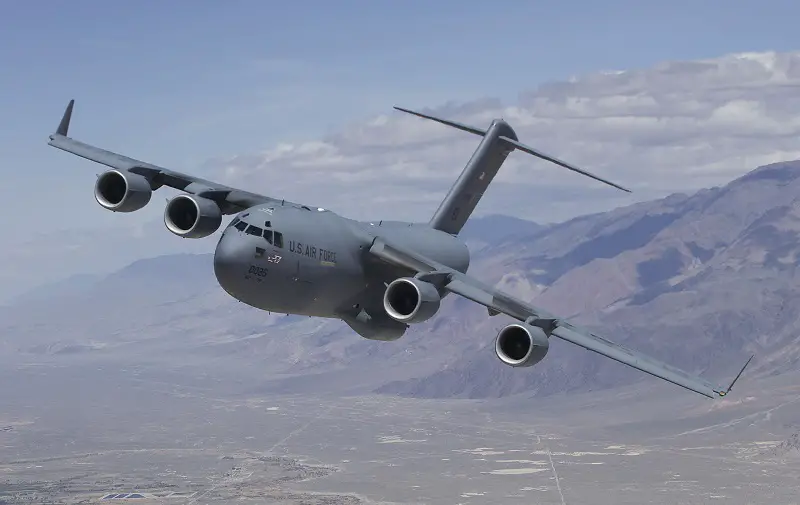Raytheon Technologies Corp., doing business as Pratt & Whitney, East Hartford, Connecticut, has been awarded a $5,500,316,404 modification to previously awarded FA8124-18-D-0001 for the F117 Engine Sustainment Support contract. The modification brings the total cumulative face value of the contract to $8,241,064,215 from $2,740,747,815. Work will be performed in San Francisco, California; Columbus, Georgia; and Tinker Air Force Base, Oklahoma, and is expected to be completed by Sept. 30, 2027. This contract involves Foreign Military Sales to the United Kingdom, Canada, Australia, United Arab Emirates, Qatar, India, and Kuwait. The U.S. Air Force Life Cycle Management Center, Tinker AFB, Oklahoma, is the contracting activity.
The McDonnell Douglas/Boeing C-17 Globemaster III is a large military transport aircraft that was developed for the United States Air Force (USAF) from the 1980s to the early 1990s by McDonnell Douglas. The C-17 carries forward the name of two previous piston-engined military cargo aircraft, the Douglas C-74 Globemaster and the Douglas C-124 Globemaster II. The C-17 commonly performs tactical and strategic airlift missions, transporting troops and cargo throughout the world; additional roles include medical evacuation and airdrop duties. The transport is in service with the USAF along with air arms of India, the United Kingdom, Australia, Canada, Qatar, the United Arab Emirates, Kuwait, and the Europe-based multilateral organization Heavy Airlift Wing.

The C-17 Globemaster III is a strategic transport aircraft, able to airlift cargo close to a battle area. The size and weight of U.S. mechanized firepower and equipment have grown in recent decades from increased air mobility requirements, particularly for large or heavy non-palletized outsize cargo. It has a length of 174 feet (53 m) and a wingspan of 169 feet 10 inches (51.77 m), and uses about 8% composite materials, mostly in secondary structure and control surfaces. The C-17 is powered by four Pratt & Whitney F117-PW-100 turbofan engines. Each engine is rated at 40,400 lbf (180 kN) of thrust. The engine’s thrust reversers direct engine exhaust air upwards and forward, reducing the chances of foreign object damage by ingestion of runway debris, and providing enough reverse thrust to back up the aircraft while taxiing. The thrust reversers can also be used in flight at idle-reverse for added drag in maximum-rate descents.
The Pratt & Whitney PW2000, also known by the military designation F117 and initially referred to as the JT10D, is a series of high-bypass turbofan aircraft engines with a thrust range from 37,000 to 43,000 lbf (160 to 190 kN). Built by Pratt & Whitney, they were designed for the Boeing 757. The first PW2000 series engine, the PW2037, powered the Boeing 757-200 and entered service with Delta Air Lines as the launch customer for the civil aviation version of the engine. Other than the 757, the PW2000 series engines also power the C-17 Globemaster III military transport; the United States Department of Defense designation for the engine is F117, with the specific variant used on the C-17 being the F117-PW-100. The powerplant first flew on the C-17 in 1991.















